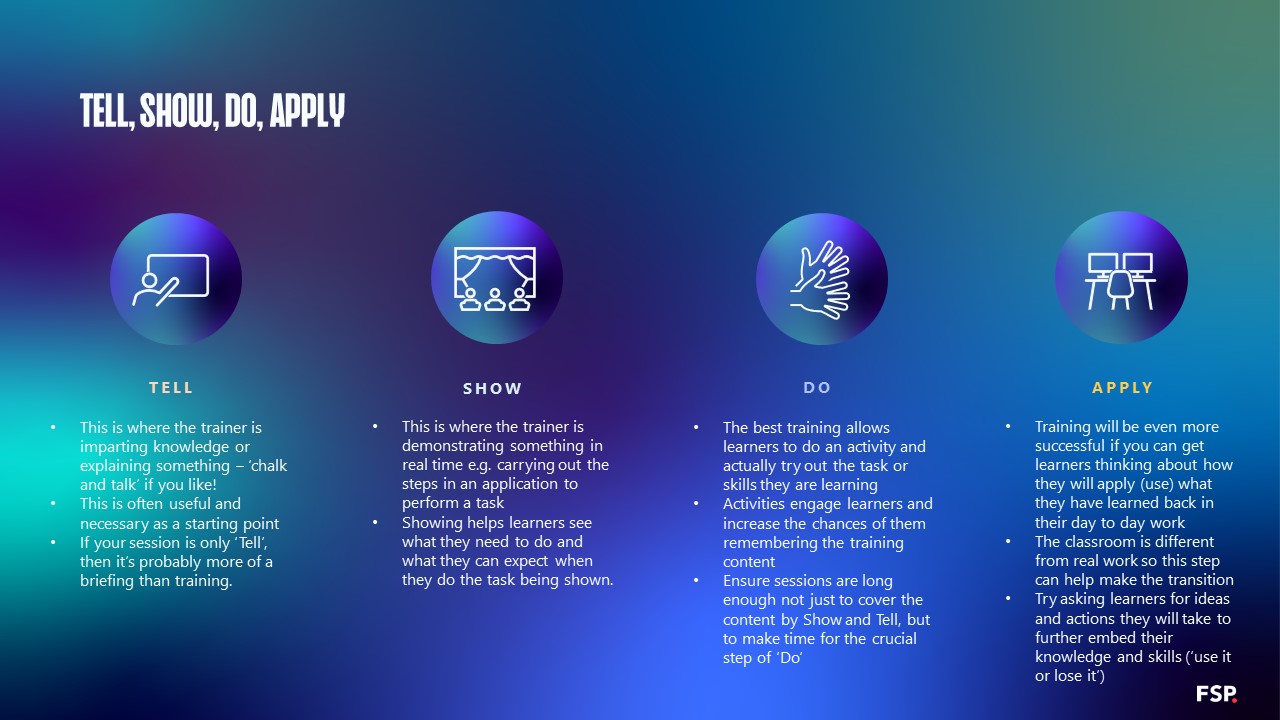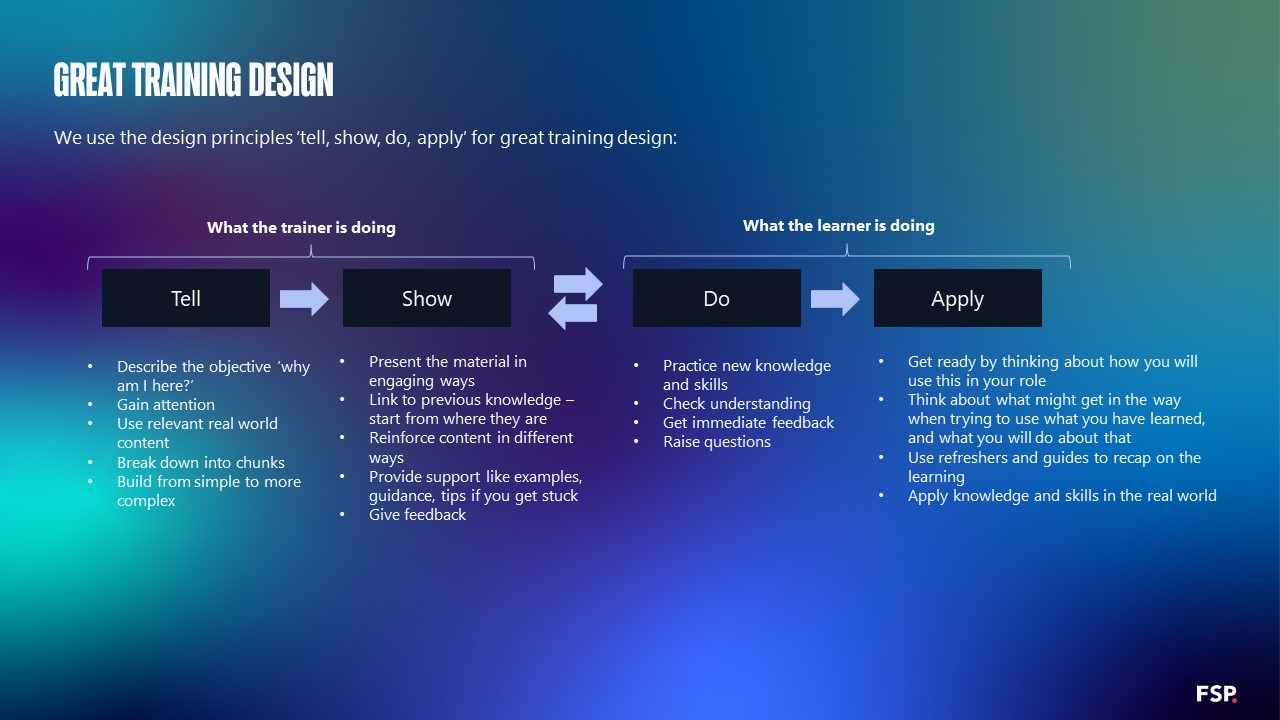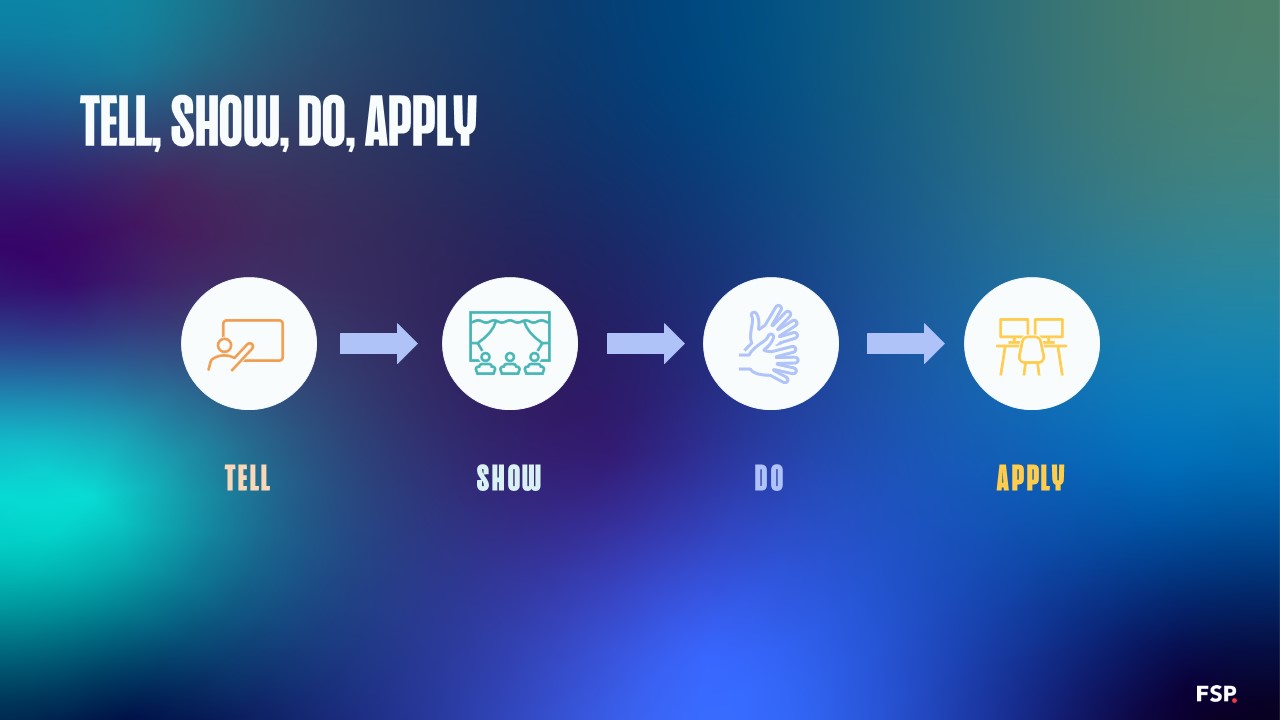Vickie Birnie, our Training Lead, explains the design of effective training programmes.
Training and development are integral components of fostering growth and success within an organisation. It is essential to create training programmes that effectively convey knowledge and skills to the participants, ensuring that they not only understand but can also apply what they have learned in their day-to-day tasks. One highly effective approach to designing such training programs is the “Tell-Show-Do-Apply” model. This model ensures that training is learner-centred, engaging, and practical, ultimately leading to improved learning outcomes.
Tell: Imparting Knowledge
The “Tell” phase is the starting point of the training process. During this phase, the trainer imparts necessary information and concepts to the learners. This can be seen as the classic “chalk and talk” style of teaching. However, it’s important to keep this phase concise and to the point, as overloading participants with information can be counterproductive.
The “Tell” phase is like setting the stage for learning. It provides the foundational knowledge that participants need to understand the subject matter. If your training session consists solely of this phase, it is more akin to a briefing rather than comprehensive training.
Show: Demonstration in Real Time
The “Show” phase is where the trainer goes beyond talking and explains a concept by demonstrating it in real-time. This phase often involves performing tasks or processes that the learners will encounter in their roles. This hands-on demonstration allows participants to see the practical application of what they’ve been told. Deeper learning occurs when individuals witness something in action.
By incorporating the “Show” element, learners can grasp not only what needs to be done but also how to do it. This visual component enhances understanding and prepares them for the next step in the training process.
Do: Active Participation
In the “Do” phase, learners become active participants in the training process. This is where they have the opportunity to put their knowledge and understanding into practice through various activities and exercises set by the trainer. Engaging in these activities not only reinforces learning but also increases the likelihood of retaining the training content.
The “Do” phase is a pivotal step in the training process. It transforms passive learners into active practitioners. For this reason, it’s crucial to allocate sufficient time within the training session for participants to engage with the material and apply it practically. Training sessions should not merely focus on covering content through “Show” and “Tell,” but also on enabling hands-on learning in the “Do” phase.
Apply: Bridging the Gap
Once learners have gained knowledge and practical experience, the “Apply” phase bridges the gap between the training environment and the real-world work setting. The classroom is distinct from the actual job, and this phase helps participants make that transition seamlessly. In this stage, trainers encourage learners to think about how they will apply their newfound knowledge and skills in their daily work.
By prompting participants to consider ideas and actions they will take to embed their knowledge and skills, organisations facilitate a “use it or lose it” mentality. This step is vital for ensuring that what is learned in the training session is not forgotten or left unused, but is actively integrated into the learners’ work routines.
The 70:20:10 Model: Blending Learning Approaches
In addition to the “Tell-Show-Do-Apply” model, organisations often consider the 70:20:10 model when designing training interventions. According to this model, we only learn 10% through formal courses, 20% from social learning with others, and a significant 70% from actually applying what we’ve learned on the job.
To harness the full potential of this model, organisations should ensure that they place their employees in the best position to apply their learning on the job. This means providing opportunities for hands-on practice, peer collaboration, and self-directed learning. The latter is particularly essential, as it allows individuals to revisit materials at their own pace, further solidifying their understanding.
In conclusion, the “Tell-Show-Do-Apply” model, in combination with the 70:20:10 approach, provides a comprehensive framework for designing effective training programmes. By focusing on each phase of this model and recognising the importance of practical application, organisations can create training experiences that empower learners to excel in their roles. The result is not only an informed and skilled workforce but also a workforce that can successfully apply their learning in their day-to-day work, ultimately benefiting the organisation as a whole.



